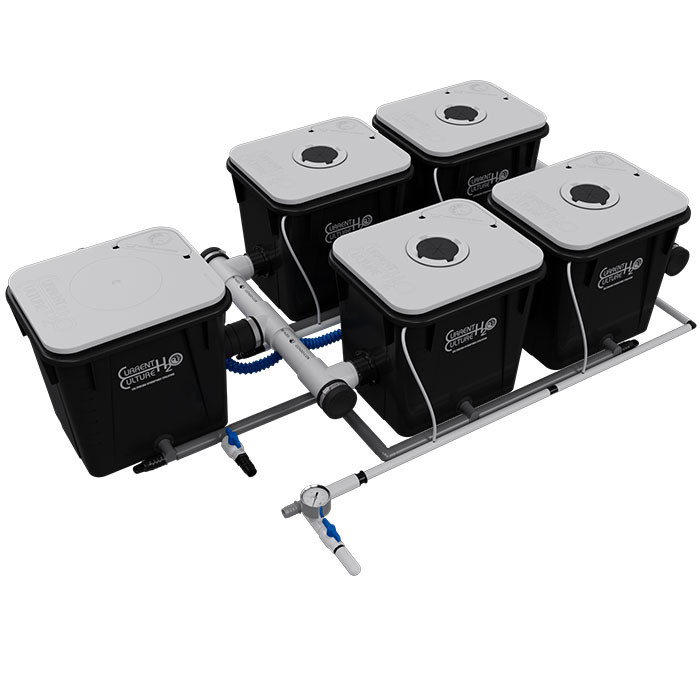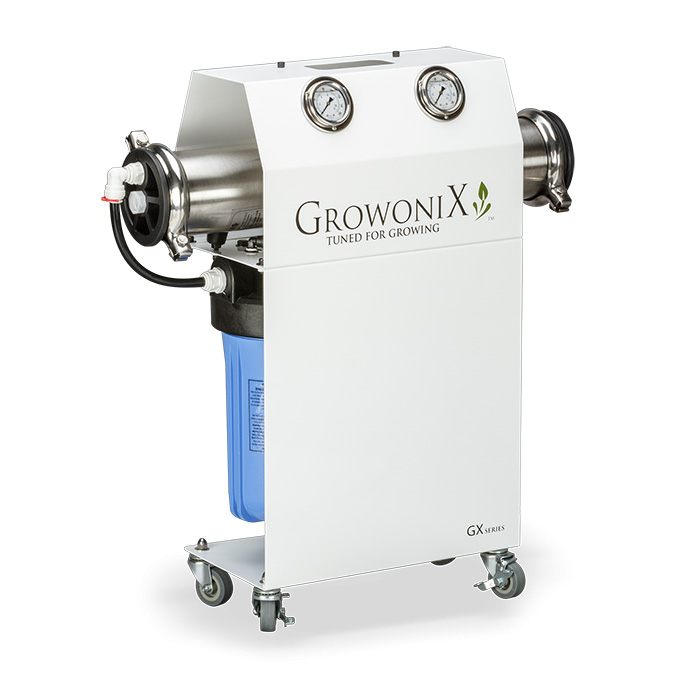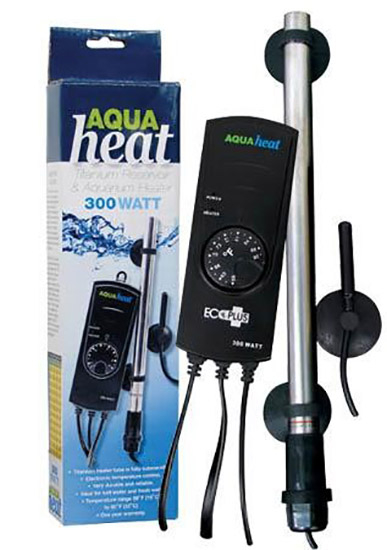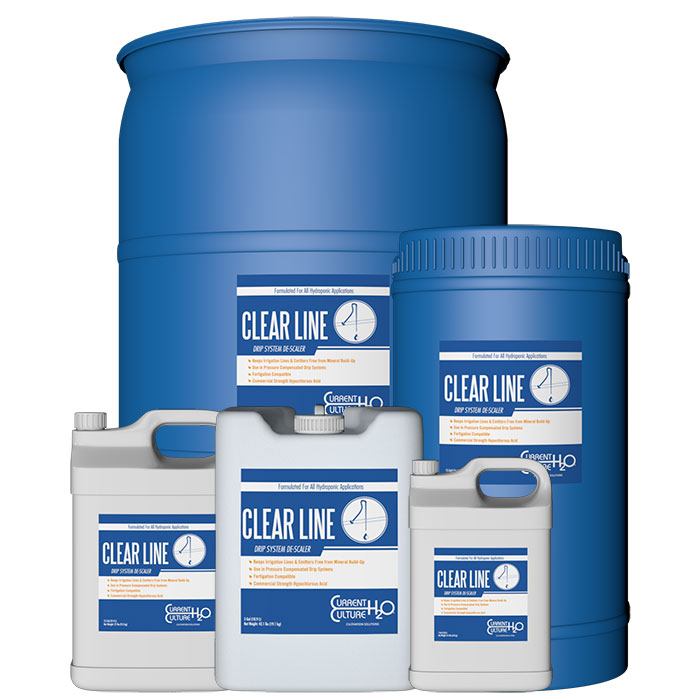Hydroponics 101 – The Complete Guide To Hydroponic Growing

Welcome to Hydroponics 101 – where you’ll learn how to grow hydroponics style!
We are going to take this opportunity to educate you on hydroponic gardening. This is one of the most exciting and efficient ways to grow indoors.
If you’re reading this guide, this is likely your first encounter with this method. You probably have a lot of questions! Rest assured we are going to cover everything you need to know!
Whether you are already familiar with it, or a complete beginner, you will gain something valuable from this post. Here is what we are going to take a deep dive into:
- What is hydroponics?
- What are the benefits of hydroponics?
- Who should & and who should not try hydroponics?
- The best hydro systems of 2025
- How to grow hydroponics plants
- And much, much more!
We’ve got a lot to cover, so without further ado, let’s dive in!
What Is Hydroponics?
You are probably excited to learn how to grow hydroponics plants. We’ve got a lot to cover before we start growing anything.
The first lesson in hydroponics 101 starts with a definition.
The definition is growing plants without the use of traditional soil or soilless mixes.
Instead, plants are put in a net pot or cup, and roots are suspended in a nutrient solution or just air.
To be considered a hydroponic system, plants need to be either supported by an inert growing medium, or nothing at all. The only nutrients your plants get are what you feed them – directly at the root zone.
The ready availability of nutrients to the root zone is what leads to such impressive growth and yields with hydroponics.
What Are The Benefits of Hydroponics?
While hydroponics can be difficult to learn compared to traditional growing, there is a reason so many growers switch to it.
Higher Efficiency
First off, hydroponics is more efficient. You will use far less water growing this way.
In many cases, your water can be reused to further increase efficiency. This saves you money on water while saving the planet! Win, win.
Faster Growth Rates
Another huge benefit of hydroponics is the quicker growth rate you’ll see.
You’ll see 25% faster crop production in a hydro system compared to traditional soil growing. This means less time to harvest and more harvests per year!
Heavier Yields
On top of faster growth, you will also see an increase in yield. These harvests can be up to 30% heavier than standard soil plants.
But, lets go back to our previous point of faster growth rates. This further increases yield. If you can fit one or two harvests in per year, you’ll see even heavier yields!
But, it isn’t all sunshine and rainbows. It wouldn’t be fair to give you all these reasons to try this method without sharing the disadvantages.
The Disadvantage of Growing Hydroponically
There are all kinds of benefits to growing hydroponically. But, this type of growing method isn’t for everyone.
It’s quite a bit more expensive than traditional soil growing, as systems can get pretty pricey. And, it’s quite a bit tougher and more complicated than soil growing.
This Is A Tougher Grow Method For New Growers
It will take a while before you are comfortable operating a hydroponic system. There is often less room for error than with soil gardening.
If you have never grown before, we do not recommend starting with a hydro system.
You will need to pay very close attention to the pH and ppm of your reservoir.
Since there is no soil to buffer out overfeeding, plants can be damaged. Use a high-quality nutrient and pH doser to eliminate any human error!
Hydroponic Systems Are An Investment
The price of a system is much higher than a standard soil garden. But with higher yields, decreased time to harvest, and savings on water, it is an investment!
And, you can make a DIY hydro system on a pretty low budget. Now, let’s move on to the next part of hydroponics 101 – the different types of grow media you can use.
Hydroponic Grow Media
As we mentioned earlier, a huge aspect of hydroponics is the absence of soil or soilless media.
Instead, you use something completely inert. The only real job of hydroponic grow media is to anchor the roots in place and provide support to your plant.
There are a number of inert growing media available for hydroponic growers. The most common are:
- Rockwool
- Clay Pebbles
- Coco coir
Rockwool
Rockwool is one of the most popular choices for hydroponics. It provides exceptional aeration and water retention and anchors the roots in place very well.
Rockwool comes in various shapes and sizes depending on your application.
Clay Pebbles
These are well-renowned, 100% inert media. Since these are pH neutral, growstones and clay pebbles are prized as one of the best options for hydroponics.
They are also reusable, and a sustainable option.
Coco Coir
The media is used in traditional gardening as well, but there are varieties specific to hydroponics.
Coco coir goes by a number of different names and is 100% organically derived from coconuts.
It features a perfect balance of drainage and water retention. We have a complete guide to growing in coco if you’re interested in learning more about this medium.
If you are looking for more information about growing in Coco, read out blog on The Complete Guide To Growing In Coco Coir.
What Are The Different Types of Hydroponic Systems?
Perhaps the most important aspect of Hydroponics 101 is learning about the different systems.
Hydroponic systems can be broken down into two categories: active or passive.
A passive system is one where the water does not need to be transported to the plants. An active hydroponic system involves the use of a water pump actively move the water to the root zone.
The simplest systems consist of just a nutrient reservoir and a water pump. Some will need some type of grow media, but not all.

Part of what makes hydroponics so complex is the variety of systems growers can implement.
A hydro system can be anything from a primitive wick system to the more advanced aeroponics systems.
There is no one set methodology that every grower must adhere to. This is what makes hydroponics so exciting.
The only common thread throughout is that hydroponics is consistently a soilless method of cultivating plants.
There are six known types of hydroponics, but we will only focus on the most prominent systems in use today.
Deep Water Culture (DWC) Systems

Also known as DWC, deep water culture is one of the most simple hydroponic systems available.
Your plant’s roots are suspended in a reservoir filled with nutrient solution. This allows for a constant supply of nutrients to the roots.
DWC systems are great for those new to hydroponics as well as commercial hydroponic growers because there are few working parts. This makes it a low-maintenance system.
The main drawback of DWC hydroponics is how easy it is to overfeed. Since the roots are submerged in the nutrient solution, there is no buffer to protect them.
It is very important to closely dose nutrients in any hydro system, but this one in particular.
Top Drip Systems
This system is different than other systems since plants are fed through the top as opposed to at the roots.
In a hydroponic drip system, drip hoses will run from the water reservoir up to the top of the grow tray. One of the most popular tray systems we offer is the Botanicare Slide Bench Systems.
Here, drippers will slowly feed the plants. The main advantage of a drip system is the ability to control how much the plants are fed.

There are recirculating and non-recirculating systems. The recirculating system is one where excess nutrients drain back into the reservoir, and are fed to the plants again. This is a great way to increase efficiency in your system.
Aeroponics Systems

Aeroponics is the most advanced system in the hydroponics industry and is a bit different than other types.
In an aeroponic system, the roots are suspended in air instead of a nutrient solution. Inside the reservoir, sprayers will emit a fine mist of nutrients and water directly into the root zone of the plant.
The misting of the root zone is the most efficient way to feed plants. Aeroponics is the way of the future, and there are even aeroponic cloning machines now.
Part of what makes aeroponics so effective is the oxygen at the root zone.
Unlike other hydro systems, the plants do not need the help of air pumps and stones.
Since they are suspended in the air, they have access to all the oxygen they could need.
Ebb and Flow Systems
The ebb and flow system is similar to a DWC system in that the roots are suspended in a nutrient solution.
However, with an ebb and flow system, it happens often.
Also referred to as flood and drain, this will work on intervals and flood the roots with water and nutrients.
The roots will be submerged for a period of time. Then, the solution drains back into the reservoir.
Ebb and flow systems combine the availability of nutrients of DWC with the aeration of aeroponics.

Hydroponic Towers
A vertical hydroponic garden allows you to grow produce easily and quickly in the convenience of your home. Grow herbs, leafy greens, or a wide variety of fruits, vegetables, and flowers in a small compact space.
A hydroponic tower system takes up less space than a traditional hydroponic system. The tiny footprint allows the indoor hydroponic garden to be used in a kitchen, living room, or any other space.
What Is The Best Hydroponic System?
The best hydroponics system depends on what your goals as a grower are. We put a list of the top systems of 2025 together to make shopping easy. You can easily compare the best systems online, and make an informed decision.
You can read all about the best hydroponic systems here.
Breaking Down Hydro System Components and Accessories
Once you decide which system you want to use, you are well on your way to a hydro grow.
But, there are some components and accessories you still might need, depending on which system you choose.
Some of these are essential, whereas others are just going to make your grow easier and better.
Air Pumps and Air Stones Provide Oxygen To Plants

This is one of the most important components to any hydro system where the roots are submerged.
This is one of the most important components to any hydro system where the roots are submerged.
Since the roots of your plant will be underwater you need to aerate the nutrient solution. By using an air pump and air stone, you are able to provide oxygen to your plants.
How Do Air Pumps and Stones Work?
The pump will sit outside the reservoir, with the stone inside.
A line will connect the two, and when powered on, the devices will deliver tiny air bubbles to the solution.
This creates dissolved oxygen, which increases your plant’s ability to feed, while also preventing it from drowning.
The Importance of Water Filtration in Hydro Systems
It is always important to pay close attention to the quality of your water. Filtering the water before it gets to the reservoir will ensure all harmful particles are removed. This helps put you in control of what you give your plants.
Reverse osmosis filters are the best way to filter for hydroponics because they provide two steps of filtration.
The first filter removes large sediments that could harm plants. The second filter is a semi-permeable membrane for tiny particles.
Another common method of filtering water is with a chlorine and sediment filter.
This is especially important in locations where local water contains many chloramines.
Water Chillers and Heaters – Because Temperature Matters Too!
If you live in a particularly warm or cold climate, you will likely see temperature fluctuations in your water reservoir.
The root zone is a very sensitive part of the plant, and it requires very specific temperatures.

Try to keep the water in your hydroponic reservoir between 65-70 degrees Fahrenheit.
If temps raise too high, plants will be unable to hold onto dissolved oxygen. This can affect their ability to absorb nutrients.
If temperatures drop too low, the plants will get shocked, and stop growing.
If either of these situations is a possibility in your climate, you will need either a hydroponic water chiller or heater.
Here is some more information on why hydroponic water temperature matters.
pH & PPM Meters
It is very important to make sure pH and ppm are within the optimal levels. A pH meter will help you determine if you need to raise or lower your pH with a pH adjuster.
The optimal pH level for hydroponic water is between 5.5-6. If you want to learn more about measuring and adjusting pH, check out our full guide.
PPM meters indicate the concentration of nutrients in your water. This will indicate if you are under or overfeeding.
You will have different requirements for ppm depending on whether you are in the growth or flower stage, and the nutrients you buy will provide a feeding schedule. To adjust your ppm, add more water or nutrients accordingly!
How Do You Build a DIY Hydroponic System?
For the final lesson in hydroponics 101, we want to teach home gardeners how to build their own systems on a budget.
It’s pretty simple. Here are the supplies you will need:
- Five-gallon bucket (with lid)
- Air pump
- Air stone
- Net pot
- Hydroponic growing medium
Keep in mind this will be a very primitive type of system. An active hydroponic system will always be more effective but if you are looking for a cheap alternative, this will work.

First, you will need to cut a hole in your lid to match the size of your net pot.
You will put the net pot in the lid and measure where you want your water line to be. The water line should reach the bottom of the growing medium and keep it moist, but not soaked.
The water line should reach the bottom of the growing medium and keep it moist, but not soaked.
Then, put your air stone in the bottom of the bucket and connect it to your air pump outside the bucket.
You are now ready to go! Anchor your plant in the net pot and let the root development begin.
You will need to regularly check the pH and ppm of your nutrient solution, and adjust accordingly. Add fresh water every other week, or sooner.
Everything You Need At Hydrobuilder.com
Hydrobuilder is the largest and most respected Hydroponics Store in the United States!
We carry the largest selection of hydroponic supplies from top brands like Netafim, Botanicare, Dosatron, Active Aqua, FloraFlex, and many more!
From complete systems to DIY components for creating your own Ebb & Flow, Drip, or Bucket system. We have every part you might need and the support to help you whenever you need it!
How To Grow Hydroponics Plants – Best Practices, Tips, & More!
Now that you know some basics of hydroponic gardens, it’s time for the main event in hydroponics 101.
Of course, the basics are still the same in terms of taking a plant from seed to harvest. You want to propagate your seeds or start your clones, feed them nutrient-rich water, and prune & train the plants. You will also need to manipulate the grow light schedule to force them into flower, and then harvest.
However, there are plenty of intricacies you need to know about to grow your plants to their full potential.
Here are some tips to help you get the best harvest possible out of your first hydroponic grow.
Using Hydroponic Plant Nutrients
We haven’t discussed the importance of nutrition for your plants. We have only mentioned that the delivery of said nutrients will be more efficient.
But in reality, the nutrients you feed your hydroponically grown plants are critical to your success. If you dial in plant nutrition, you can see some of the most impressive plant growth and yields you’ve ever achieved!
This is just due to the nature of hydroponics – direct exposure of nutrients to the plant’s root zone.
When this nutrient-rich solution is aerated, it leads to increased nutrient uptake ability for your plant.
We have a review of the top plant nutrients that you should use. You’ll learn all about the best hydroponic nutrients you can use to feed your plants.
The reason you need to use specific hydro nutrients is that normal soil nutrients will clog hydroponic lines, leading to issues. For this same reason, you should avoid thick, organic nutrients as well.
Cleaning & Maintaining Your Hydroponic System
Part of learning how to grow plants in water is keeping your system clean and maintained. You’ll need to use products often to prevent scaling and biofilm buildup.
These will lead to clogs and non-uniform distribution of nutrients. This leads to plant problems that you don’t want to deal with such as deficiency or toxicity of certain nutrients.
So take the time to prevent salt build-up, and actively attack it. It’s as simple as adding UC Roots into your feeding regimen for hobby growers. Commercial growers can use the Current Culture Clear Line for a more powerful formula.
We recommend you check out our complete guide on how to clean salt build-up in your hydroponics system. It will help you understand how to keep things running smoothly before you get started.
How Often To Change Out Hydroponic Reservoir With Fresh Nutrient-Rich Water
Furthermore, you’ll need to know when to replace the nutrient solution in your reservoir entirely.
You can recirculate your nutrient solution for some time but not forever. You’ll need fresh pH-balanced water and properly dosed nutrients added at some point.
In most cases, this is every 2-3 weeks. Of course, you’ll want to watch the ppm’s to decide whether you need to change it earlier or not.
Final Thoughts On Hydroponics 101
By now, you should have an understanding of the different hydroponic systems and important considerations for growing in them.
This hydroponics 101 guide was just a quick view of hydroponic growing in general. You should now have a good idea of growing plants without soil. Now it is just a matter of taking action.
The key to plants being grown hydroponically is precision. With nutrient dosing, you are in full control of how you feed your plants.
If you are new to growing, check out our definitive guide on indoor growing.
Whether you are hydroponic gardening at home or commercially, this will help you take a plant from seed to harvest. Then, you can apply that knowledge to hydroponic growing!
Have questions about your grow? We're Here To Help!
Our Northern California based experts can help. We're here to make sure you get what you need to maximize your harvest.






































